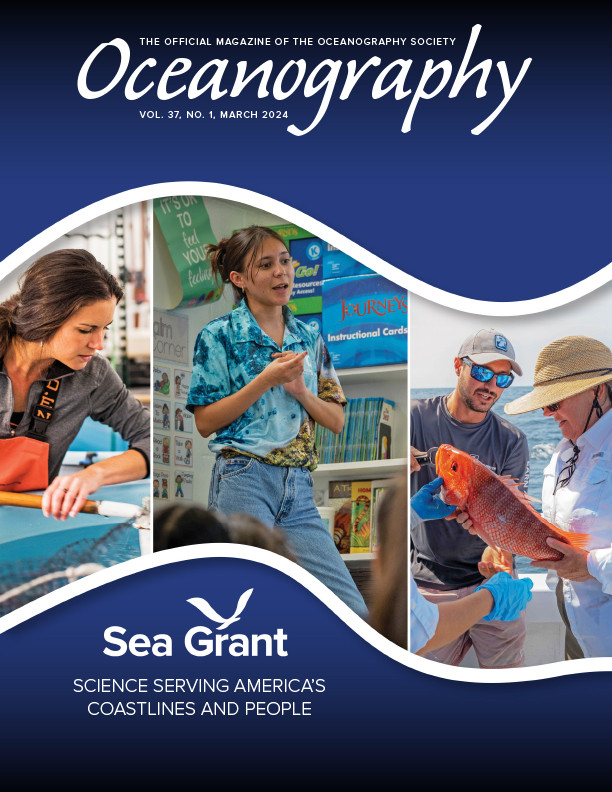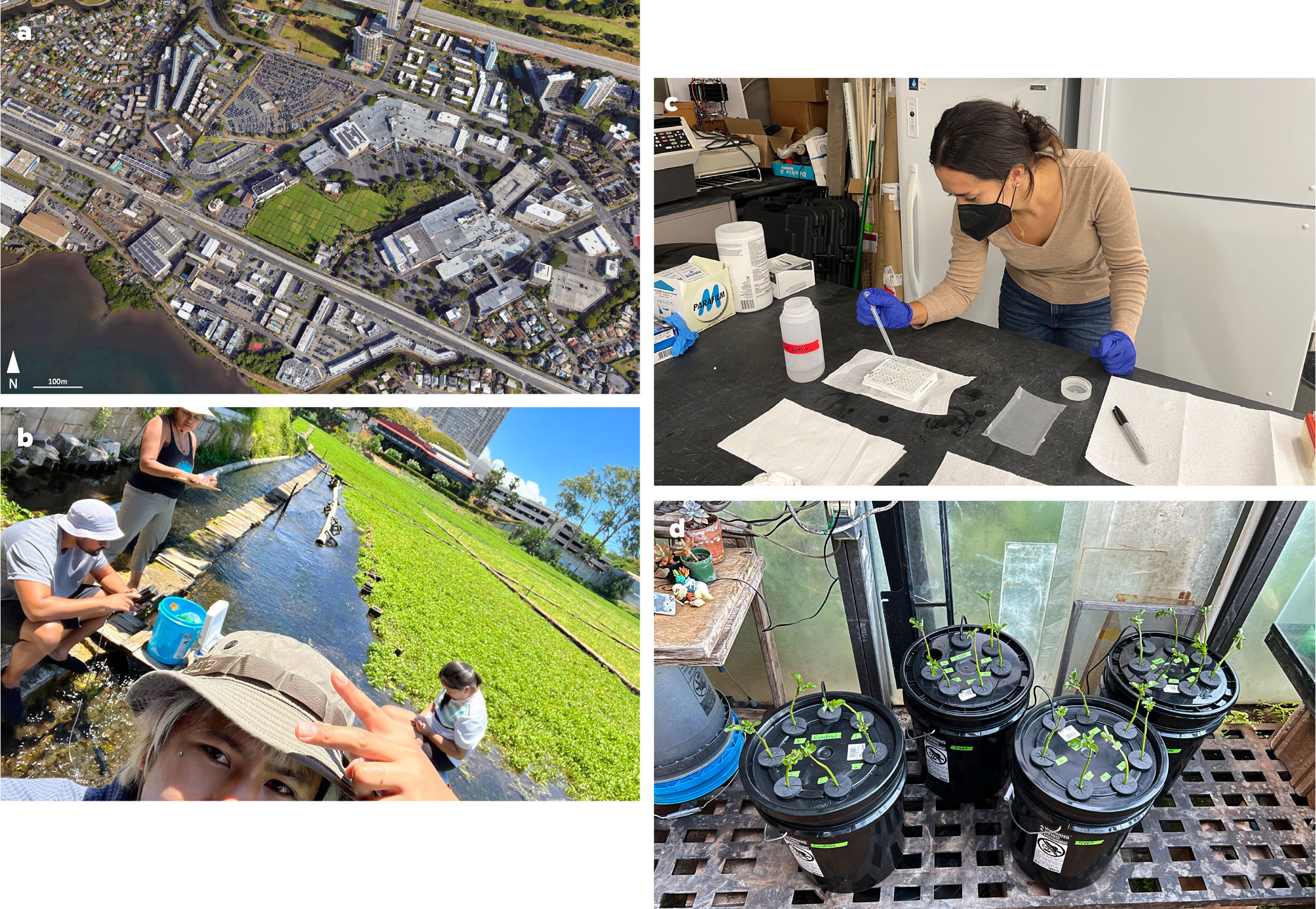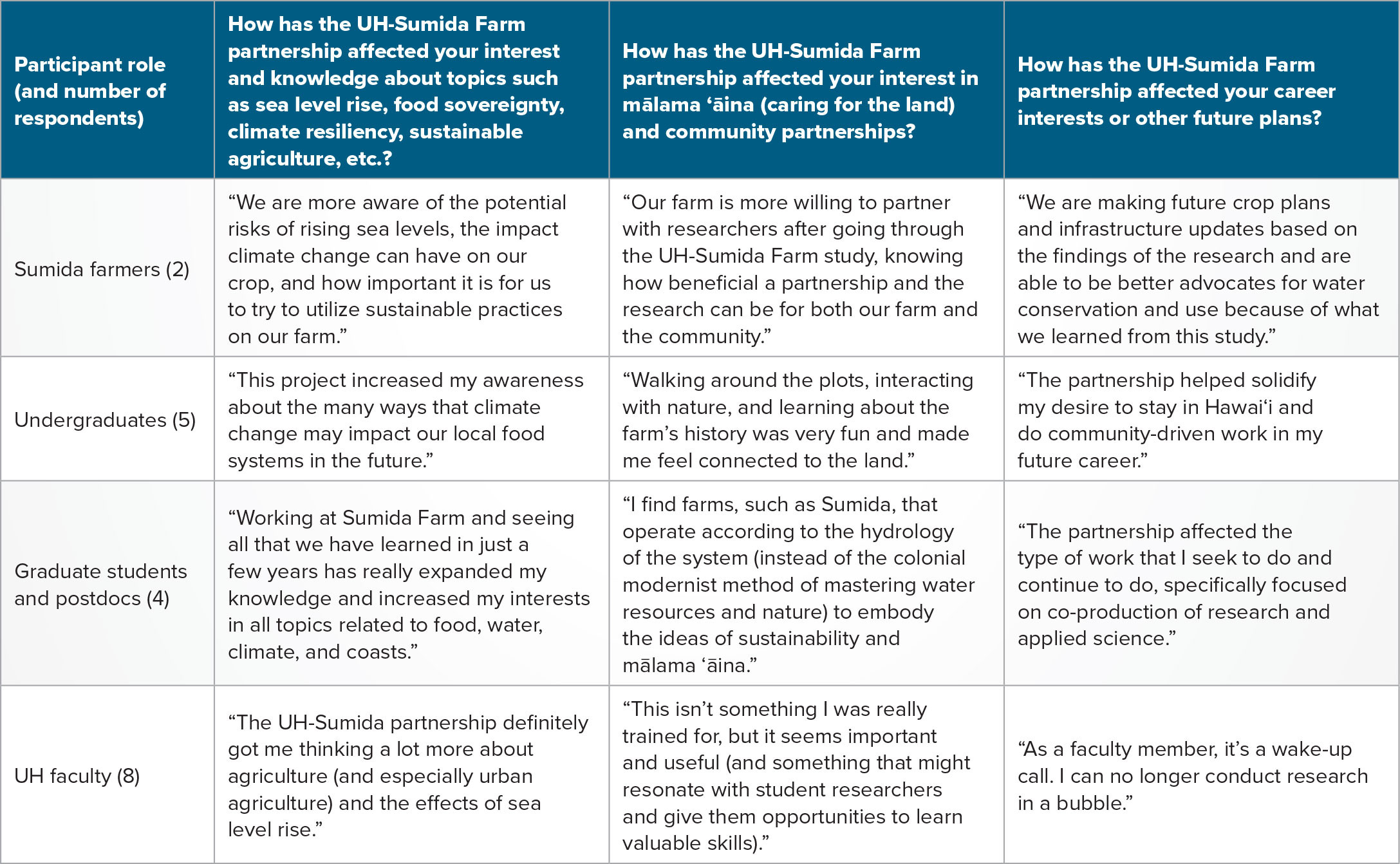Full Text
The Sumida watercress farm near Pu‘uloa (Pearl Harbor), O‘ahu has been in continuous operation since 1928. This family-run farm (Figure 1a) produces 70% of the state’s watercress crop, making it critical to Hawai‘i’s food production. The farm’s watercress relies completely on water from freshwater springs. However, the amount of water flowing from the springs has declined by half over the last century as a result of groundwater pumping, climate change, and other drivers (Oki, 2005). Mo‘olelo (oral histories) published in Hawaiian language newspapers from 1834 to 1948 document the springs’ use for agriculture and recreation by Hawaiian ali‘i (chiefs) for more than 1,000 years (Engels et al., 2020).
|
|
A collaboration between the University of Hawai‘i (UH), Hawai‘i Sea Grant, and the fourth generation of Sumida farmers focuses on training a new generation of community-engaged scientists. A key partner is the UH Economic Research Organization, an interdisciplinary research group that informs public policy across Hawai‘i. The overarching goal is to build a healthy, resilient, and sustainable agricultural community in the face of environmental and social change. To do that, we are following University of Hawai‘i Sea Grant best practices for community-engaged research (Kūlana Noi‘i Working Group, 2021). UH scientists, local and Native Hawaiian students, and the farmers co-design research directions and co-produce knowledge in response to the farm’s needs. Since 2017, about once a month, we have tested water quality and monitored the springs’ salinity (Figure 1b). These data help the farmers identify potential contaminants from the surrounding urban communities (Figure 1c), forecast climate-change-driven sea level rise impacts, plan for future watercress species resilient to increasingly saline conditions, and consider alternative growth methods to ensure crop viability.
In addition to water quality, students are co-designing research projects on a range of topics, including native bird biodiversity, freshwater and saltwater plankton, watercress adaptability (Figure 1d), nitrogen cycling, the effects of groundwater pumping on the springs’ water flow, and watercress economics. The participants’ engagement is reflected in the fact that all have continued on their educational and career pathways (e.g., from community college to four-year colleges, graduate school, or employment). A four-question survey administered in September 2023 reveals how participants are impacted by this research (Table 1).
TABLE 1. Sample quotes from the University of Hawai‘i (UH)-Sumida Farm partnership participant survey (n = 19). > High res table |
Respondents reported increased awareness of sea level rise and Hawai‘i’s food security as well as a strong commitment to community partnerships, and many students reported an increased commitment to working in Hawai‘i after graduation. The UH-Sumida project has created lasting relationships between a local farming family, UH researchers, and Sea Grant, and may serve as a model for training a new generation of community-engaged scientists.



